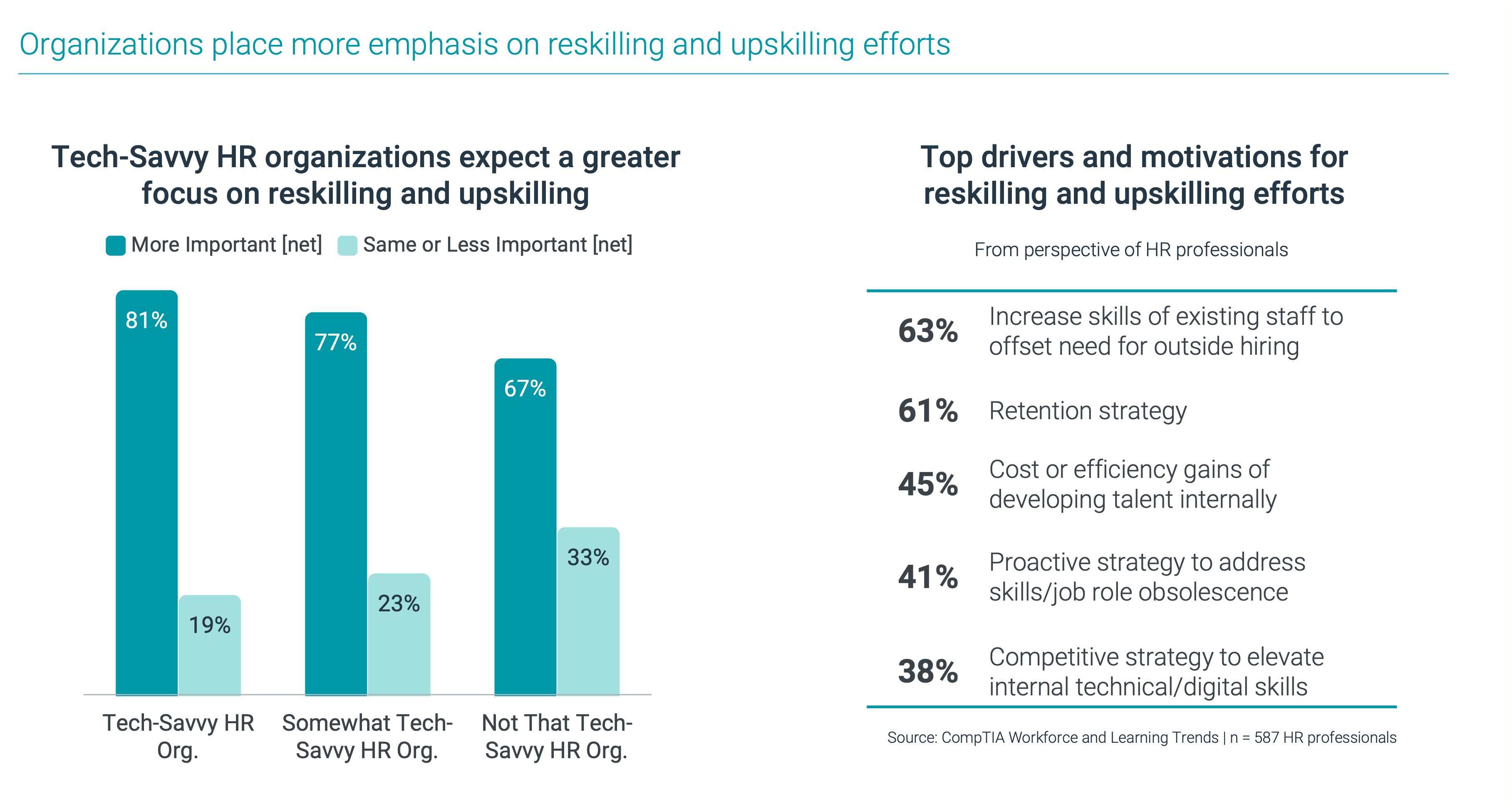Talent Pipeline Shortcomings Highlight the Need for Human Infrastructure Investment
Employer hiring activity for tech jobs was at a record high during the first quarter of 2022. Total tech job posting volumes during the past 12 months reached nearly 4 million, with employers across every industry sector in the U.S. economy competing for the workers to implement their technology-centered strategies.
Talent constraints are created by multiple factors. The pandemic magnified longstanding challenges associated with digital divides, skills obsolescence, demographic shifts, perception problems and other leaks and bottlenecks in the talent pipeline. These collectively have resulted in a talent pipeline that works fitfully.
Like physical infrastructure, human infrastructure investment requires a mix of renovating established approaches and expanding through new approaches like employment on-ramps or career transition bridges. Because talent pipelines pass through the complexities of local schools, higher education, government agencies, workforce development providers and employers, it follows that strategies and incremental gains are often disjointed.

Charles Eaton, Chief of Staff for CompTIA and CEO of Creating IT Futures, says he sees examples from large employers collaborating with nonprofit providers of IT skills training like Per Scholas and CompTIA Tech Career Academy: “Companies are saying, ‘We've got to work directly with these providers and pull folks in.’ There's momentum around education.”
The disjointed nature of talent pipelines has to be addressed on several fronts. As noted by Stanger, “There’s too hard a break between the program and the job. There needs to be more blending. On the education side, there’s an attitude of ‘We've given you that magic thing — that education. Now go get the job.’ The more successful programs say, ‘We're going to actively work to transition you.’”
Talent pipelines increasingly rely on apprenticeship programs updated for the information age, as we noted last in last year’s edition of this report. Remote work and growing government emphasis are new facets to the apprenticeship picture.
Zeshan Sattar, Director of Learning and Skills Certification at CompTIA, works primarily with employers in Europe, where apprenticeships are more common. During the pandemic, many apprenticeships programs have picked up some of the same tactics the rest of the workplace has.
“They’re learning remotely, which makes sense, because they’re next going to embark on working remotely” Sattar says. “With remote apprenticeships, there’s a risk that the passive learning from the mentor is lost. But programs create virtual office environments for passive learning and for impromptu communication. An emerging habit is just to leave a video chat window open all day to virtually ‘lean over’ to ask a quick question or to observe.”
Kardel, who serves on the U.S. Department of Labor's Apprenticeship Advisory Committee, says, “The Department of Labor thinks funding apprenticeships to get people into the tech workforce should be a priority, because it gives the biggest lift for the least effort. There's data coming out on that, so it’s becoming a federal policy priority. Employer adoption is the biggest issue.”
Whatever the form of investments in talent infrastructure, Kardel says, “The key thing is to develop a plan. There's no magic in it, and it’s hard work. It's not a surprise that planning is what it comes down to. But if you work the plan and use it to recruit and to develop people, you get results.”
Please visit the CompTIA research hub to access the full Workforce and Learning Trends report.